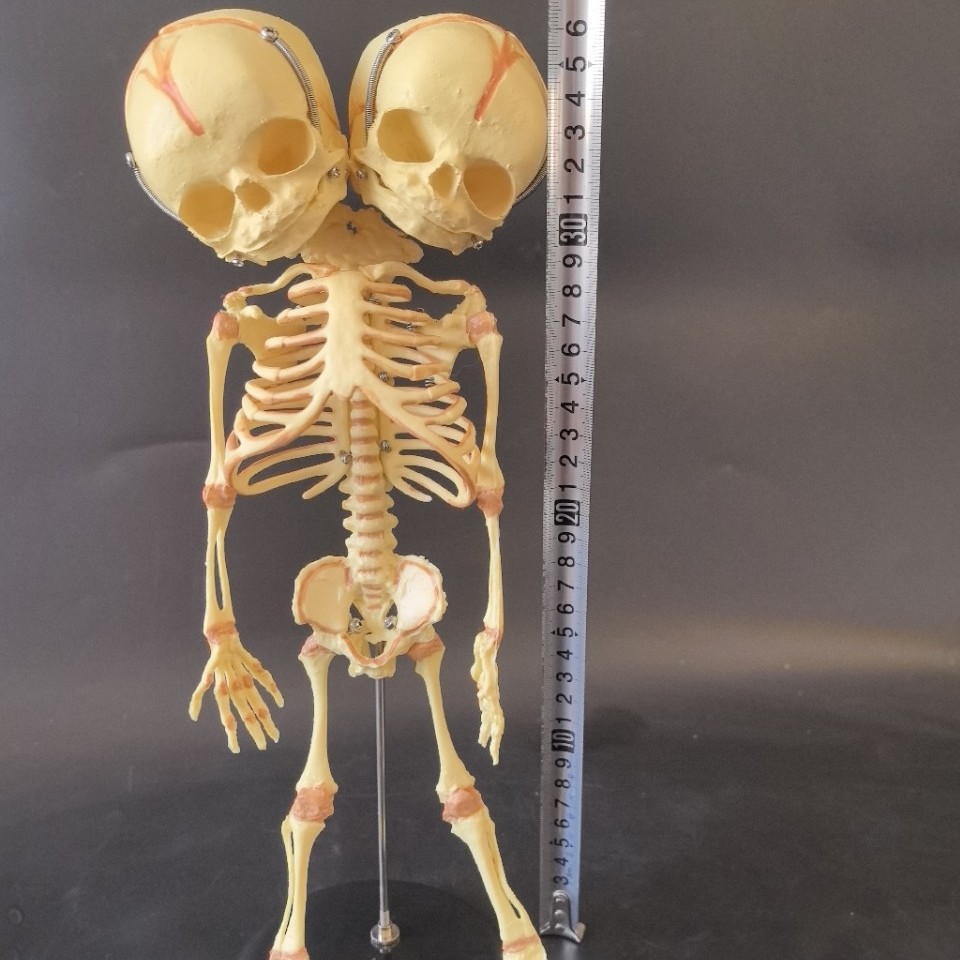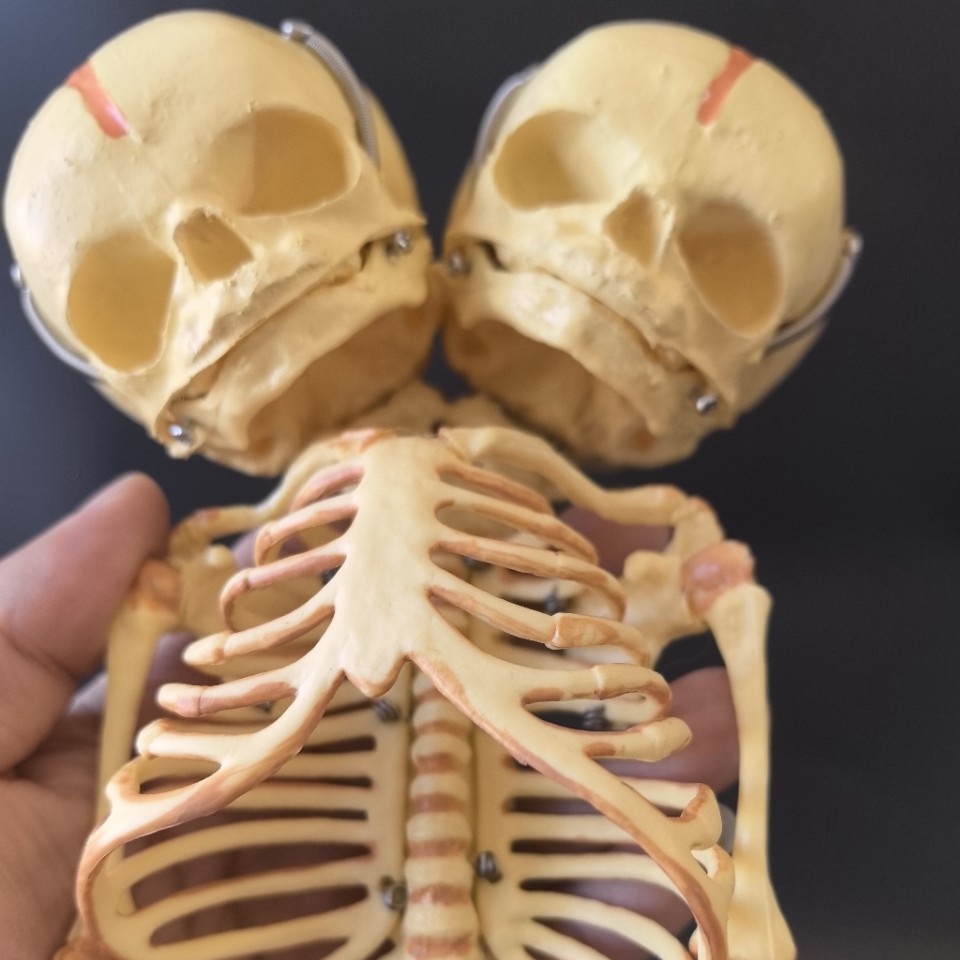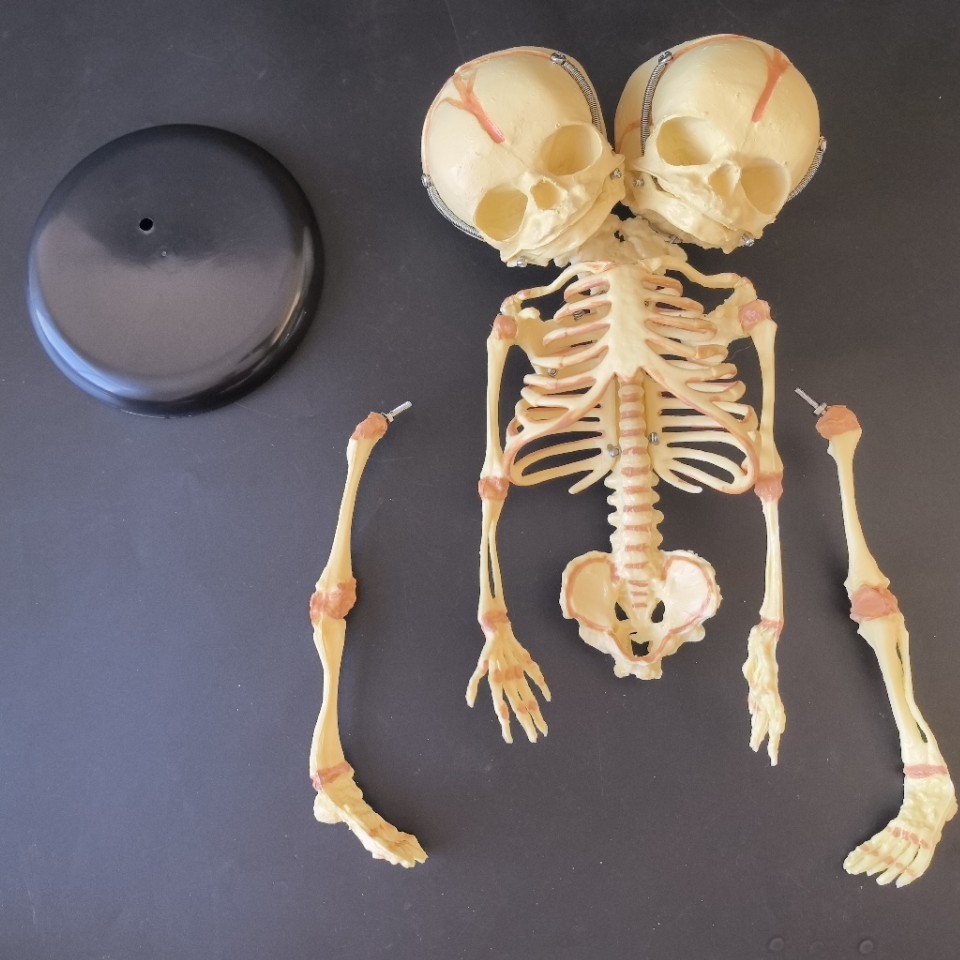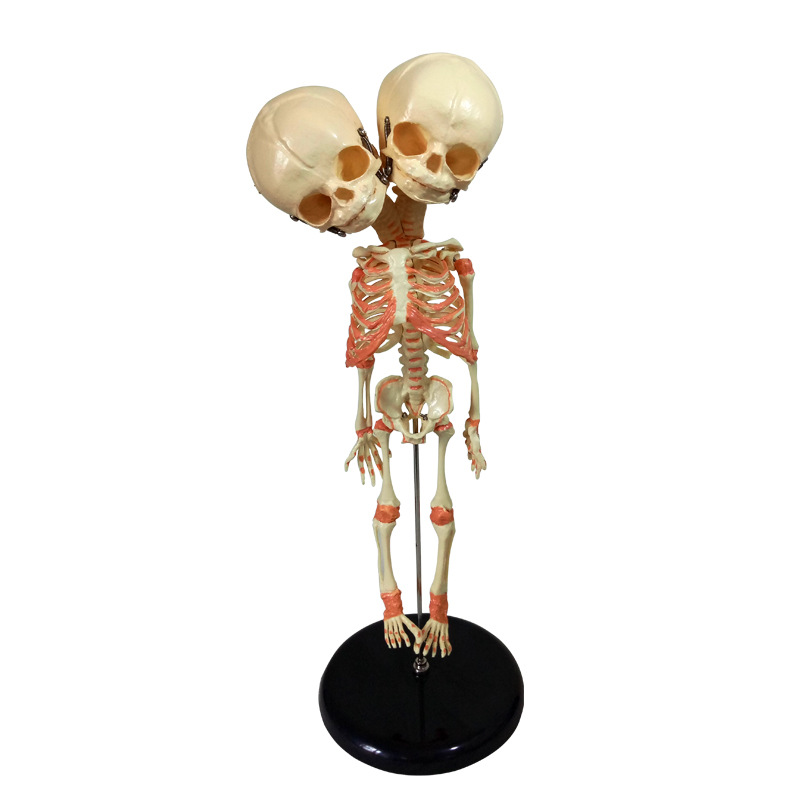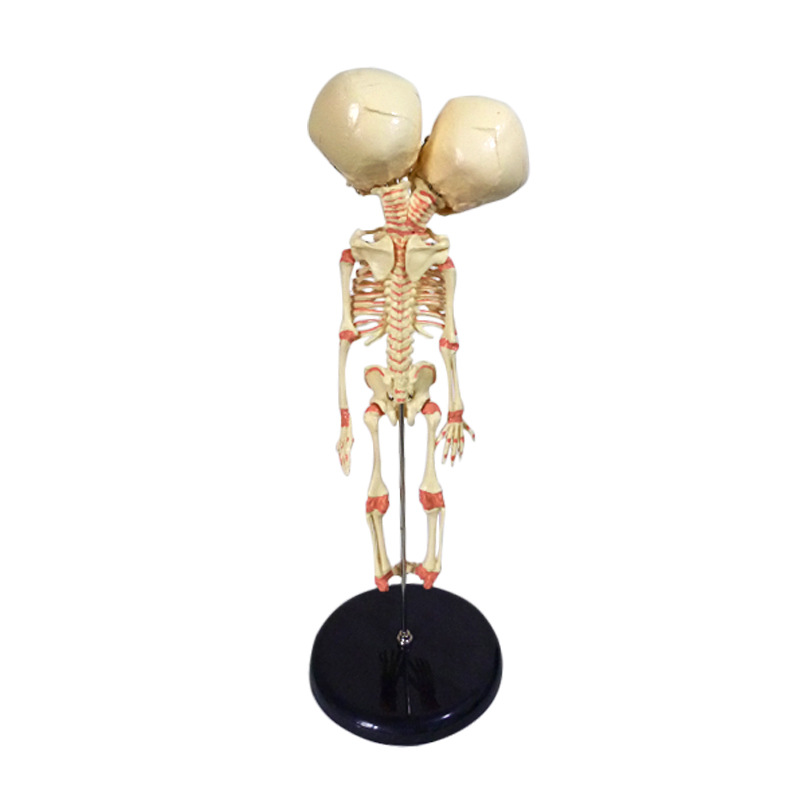Press Release: Rare Model of Twin-Headed Infant Skeleton Launched, Filling the Gap in Special Medical Teaching Aids
Recently, we have launched a rare model of the human skeleton of a twin-headed infant. This product is based on a rare congenital deformity case and precisely replicates the skeletal structure of the twin-headed infant. Once released, it has attracted widespread attention in the fields of medical education, research, and popular science, providing a new tool for the study of special human forms and the dissemination of knowledge.
1. New Breakthrough in Medical Teaching Aids: Focusing on Rare Deformities Research
In medical education, conventional human models are unable to cover teaching scenarios of rare congenital deformities. The newly launched twin-headed infant skeleton model, designed with the participation of medical experts, fully reproduces the pathological features from the fusion of the skull to the adapted structure of the torso skeleton. A professor of anatomy at a certain medical college stated: “This model fills the gap in pathological anatomy teaching and enables students to intuitively understand the mechanism of abnormal embryonic development. It is of great significance for improving the diagnosis and treatment of rare diseases.”
2. “Bridge” for Research and Popular Science: From Laboratory to Public View
In addition to the value in medical education, the model also serves research and popular science. The research team can use it to conduct pathological analysis of congenital deformities, trace the clues of genes and environmental influences on embryonic development; In the popular science scenario, after the museum introduces this model, it uses “rare human structures” as the entry point to attract a large number of visitors to stop and watch, converting professional medical knowledge into accessible materials for life science exploration, achieving the dual value of scientific dissemination and cultural curiosity.
3. Craftsmanship and Quality Assurance: Reproducing the “Special Form” of Life
The model is made of environmentally friendly medical-grade PVC material, poured by high-precision molds and polished through multiple manual processes to ensure clear presentation of skeletal details (such as bone seams, joint connections), while also taking into account durability and safety. The team leader emphasized: “We take respecting life and disseminating knowledge as our初心, making the model not only a professional research tool but also a window connecting the public with the mysteries of medicine.”
Currently, the twin-headed infant skeleton model has been officially launched and is available for reservation worldwide for medical institutions, research teams, and science and education museums. It is expected to push the research on special human forms to a new level, making “rare cases” no longer difficult to find teaching samples, and injecting new vitality into medical development and scientific dissemination.
Post time: Aug-07-2025


